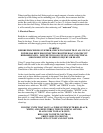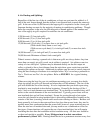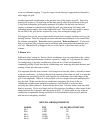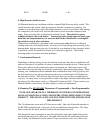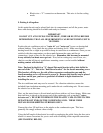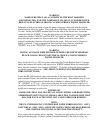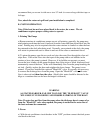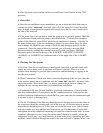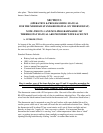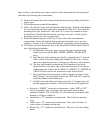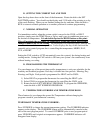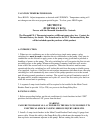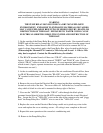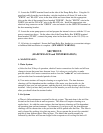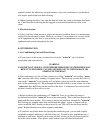b) Place the main circuit breaker and the air conditioner circuit breaker in their "ON"
positions.
3. Water Out:
a) Once the air conditioner starts, immediately go out on deck and check that water is
coming out of the "water out" thru-hull. Once all of the latent air is forced from the
hoses a steady stream should be present with enough force that the water stream clears
the side of the boat hull.
b) If the water flow is not present or weak, the pump was not properly primed. Shut the
air conditioner off and prime the pump as described above. (You may also attempt to
prime via the bleed off valve ONLY while the air conditioner is running – allowing for
the pump to function). If the air conditioner is allowed to run without water for more
than a minute, the High Pressure switch will activate and disengage power from the
compressor. Once the water problem is corrected, you will need to reset the High
Pressure switch by pushing the extended metal tab in with your finger. The High
Pressure switch is located on the top of the 6,500 BTU, 9,000 BTU, 12,000 BTU,
16,500BTU, or 24,000BTU air conditioner and is on the upper side of the 5,200 BTU
unit.
4. Checking Out The System:
a) Air Flow: Once the air conditioner is running and water flow is present, check each
supply air vent to make sure it is open and cooling air is present. If air flow is not
present, check ducting for good air tight connections and that kinking or sagging of the
duct has not occurred.
b) Water Connections: Check each water connection beginning at the sea cock, then the
water strainer, pump, the air conditioner and the "water out" thru-hull. No water leaks
should be present. Also, at this time, it is always good to check the hose clamps for
tightness in case one may have been overlooked during installation.
c) Condensation: By now the unit should be producing condensation. Check to make
sure that condensation is flowing freely into the condensation hose. If the unit has not
produced sufficient condensation to check the flow, pour water into the condensation pan
to see that in fact it is flowing freely.
d) The Air Conditioner Unit: The unit should be free of vibration noises and the sides of
the evaporator should be sweating and cool all the way up. If vibration noise is present,
adjust the unit mounting screws. If this does not correct the noise, use a socket wrench
with an extender or a large phillips head screwdriver (or 5/16 nut runner if applicable)
and tighten down the compressor mounting bolts until the vibration noise stops. In some
situations, although very rare, it may lessen the sound vibration to actually loosen the
compressor bolts a very, very small amount. In some boats where a mounting shelf was
installed, sound will travel through the board to the side walls and a "speaker effect" will



